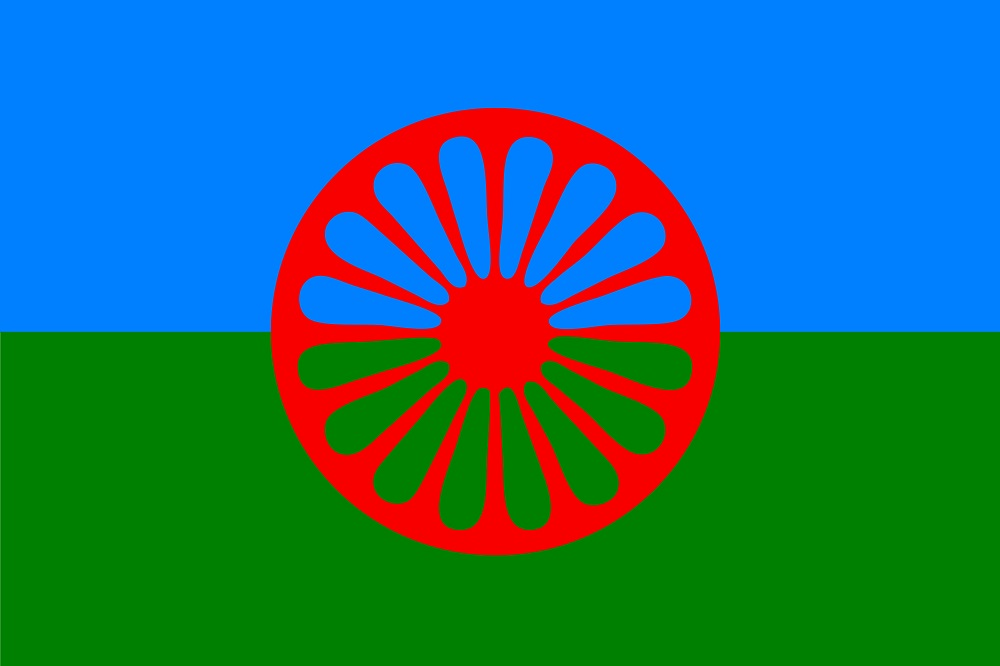Written by Anita Orav,

Since 1990, 8 April has been marked every year as International Roma Day, providing an opportunity both to discuss the situation of Roma, and to celebrate Romani culture.
Roma population in Europe
With an estimated population of 10 to 12 million, the Roma are the largest ethnic minority in Europe. Around 6 million Roma live in the European Union, with Bulgaria, Slovakia, Romania and Hungary the Member States with the highest percentages in their populations. The Roma are one of the most marginalised communities in Europe, as some 80 % are estimated to live below their country’s at-risk-of-poverty threshold. In addition to material deprivation, Roma face multiple factors of marginalisation such as inadequate housing, low educational levels, high unemployment, poor health, discrimination and prejudice.
The Council of Europe uses the term ‘Roma and Travellers‘ to encompass various groups, including, on one hand Roma, Sinti/Manush, Calé, Kaale, Romanichals, Boyash/Rudari; Balkan Egyptians (Egyptians and Ashkali); and Eastern groups (Dom, Lom and Abdal); and, on the other, groups such as Travellers, Yenish, and the populations designated under the administrative term Gens du voyage; as well as persons who identify themselves as Gypsies.
The EU Roma framework
Member States have the competence to define their policies in this area, while the EU acts as coordinator. The general framework is set by the Racial Equality Directive prohibiting discrimination based on racial or ethnic origin and the EU Charter of Fundamental Rights (Article 21). A more focused approach came in 2011 with the European Commission communication on an EU Framework for National Roma Integration Strategies up to 2020, calling on Member States to adopt national strategies following common targets in four key areas for inclusion: education, employment, healthcare and housing. The national strategies were assessed by the Commission in 2012, and have been monitored yearly thereafter. A 2016 communication also reviewed, for the first time, the implementation of the European Council’s 2013 recommendation on effective Roma integration measures in the Member States.
The EU supports national inclusion initiatives through its cohesion policy, with the 2014-2020 package focusing more on support for marginalised communities than in the previous programming periods. The Commission has encouraged Member States to deploy structural funds in their national strategies, as well as to make full use of the national Roma contact points to ensure that the funding actually reaches Roma.
Moreover, the Commission organises regular Roma Summits to provide a high-level forum to discuss Roma issues among the representatives of EU institutions, national governments and civil society organisations.
European Parliament resolutions
In 2005, the European Parliament was the first institution to use the term ‘anti-gypsyism’ in an official EU document, calling on the Council, Commission, Member States and candidate countries to help combat this discrimination in all its forms. In its 2013 resolution on progress made in the implementation of the national Roma integration strategies, Parliament condemned the ethnic profiling and illegal expulsions, police abuse and human rights violations against Roma in EU Member States, asking the Commission to set up an EU-wide monitoring mechanism. In a separate resolution, Parliament deplored the discrimination faced by Roma women, and urged Member States to focus on empowering Roma women in their national strategies. In its resolution of 15 April 2015, Parliament expressed its deep concern at the rise of anti-gypsyism, and demanded greater efforts to end discrimination, hate crime, and hate speech against Roma. It proposed that 2 August be recognised as European Roma Holocaust Memorial Day, dedicated to commemorating the victims of the genocide during World War II. On 31 July 2015, the Commission supported the proposal, and expressed hope that the Member States would also soon recognise it.
Read this ‘At a glance’ publication on ‘International Roma Day‘ in PDF.








[…] Source Article from https://epthinktank.eu/2017/04/07/international-roma-day/ […]